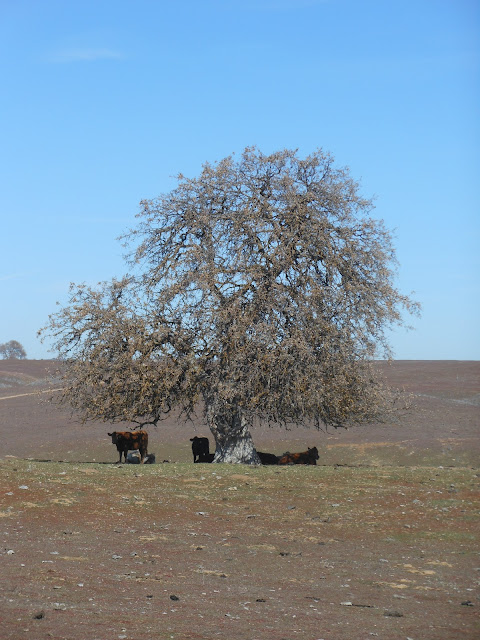A few days ago I posted a photo that I took of an old abandoned boat and a barn on the eastern outskirts of the town of Tehachapi. Today I wanted to feature on the western side of that town. Unlike that first photo this location isn't on the outskirts of that town but further down the highway (58) as you emerge from the mountains and begin to descend towards Bakersfield.
Very quickly as you travel lower in elevation the landscape changes from pine forests to rolling hills and scarce vegetation. It's quite a stunning sight to see rather large trees dotting the landscape against those arid hills. Truly anything would stand out against this landscape, but those trees standing out there where there is literally no other visible plant life except some sparse prairie grass seems to defy understanding.
How do these trees survive in such a dry and arid landscape?
To an outsider traveling through, it does seem to be some sort of enigma, but to those who know these mountains there is a simple answer. These shots were taken in the month September when the dry California summer has dried out just about everything. Truth be told in just a couple of months the weather will change drastically as the winter season brings ample amounts of rain and snow to this location.
It's a cycle that happens in California every year. Winter moisture allows plants to grow and bloom throughout the spring. In the summer months it all dries out again due to the lack of rain and the cycle from wet and green to dry and brown continues.
It doesn't sound like a great place to own a farm, but there are some healthy looking cows taking shelter from the sun under those trees.
It should be noted that the nearby city of Bakersfield is the gateway to some of the most productive farmlands in America. Where Mother Nature doesn't always provide the rain these farms need the modern manmade practices of irrigation and aqueducts that channel water from the north make up for it.
Here are my photos:





















No comments:
Post a Comment